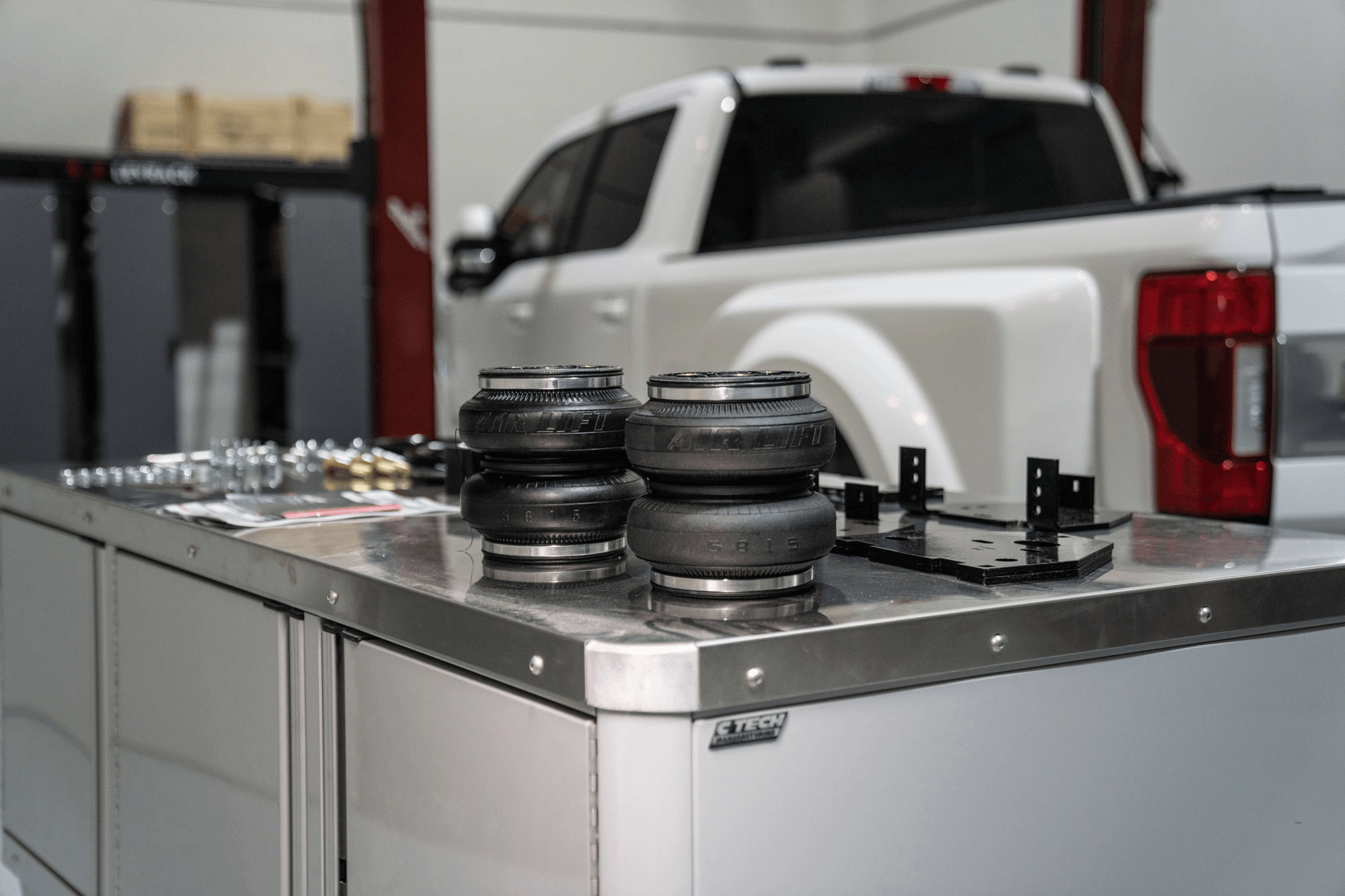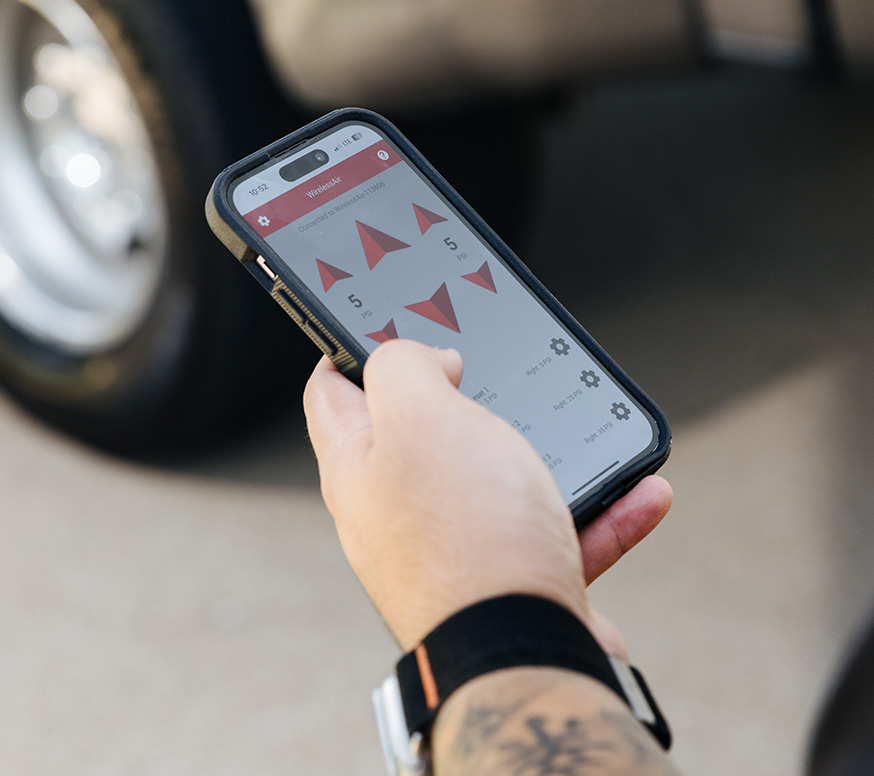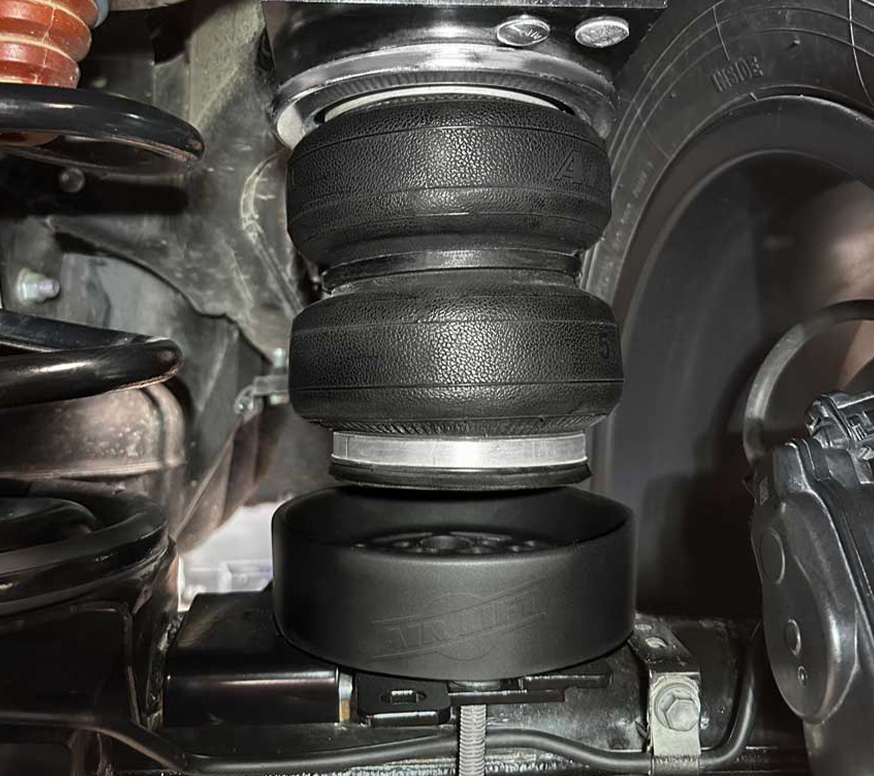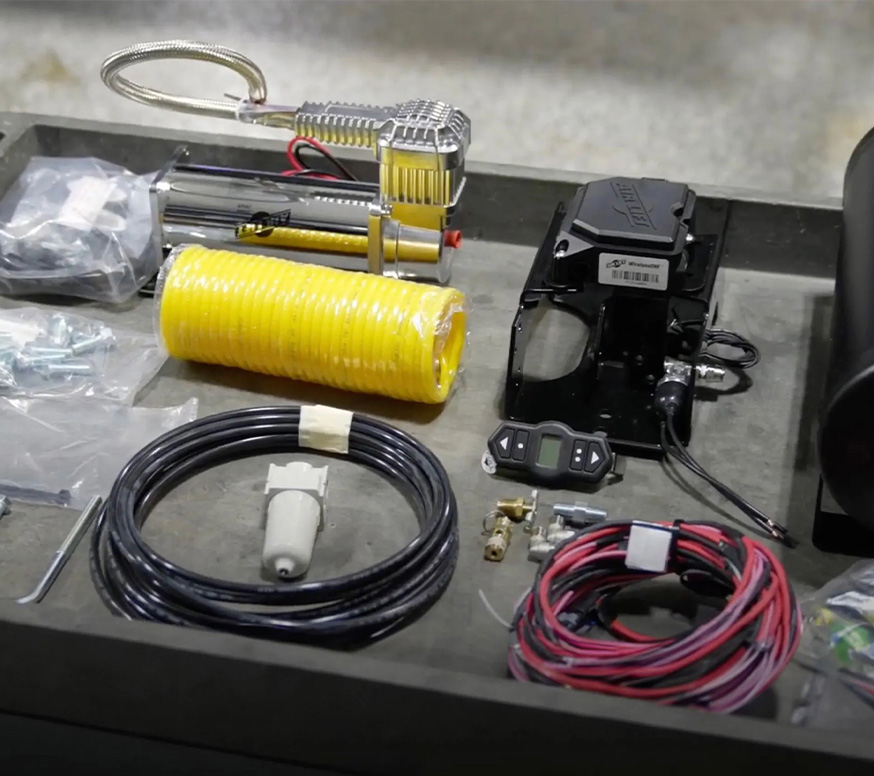
A Primer on Vehicle Weight Ratings
6/16/2014
Air Lift air springs are just one component of a vehicle’s ability to carry a load and they alone do not increase a vehicle’s Gross Vehicle Weight Ratings (GVWR). Other items such as brakes, wheel bearings, tires, engine, transmission, differential gear ratios, and cooling are major components of a vehicle’s weight ratings that are not changed by adding any type of suspension enhancement to help support a load. Exceeding a vehicle’s weight ratings with air springs is dangerous and voids the Air Lift lifetime warranty. It is crucial that vehicle weight ratings are understood and adhered to. Weight ratings are typically posted on the vehicle. If the weight ratings can’t be found, then contact the dealer where the vehicle was purchased. Some of the aspects of vehicle weight ratings are discussed below.
Tires and Shocks
Tires and shock absorbers are the first component of a vehicle’s suspension. Air Lift recommends that the tires’ load and pressure ratings are fully understood and adhered to. Improper tires and tire pressure will affect ride comfort, handling, and vehicle safety. Air Lift also recommends good quality shock absorbers. See your local dealer for more information and assistance.
Tongue Weight
Tongue weight is a critical measurement that must be made before towing. It refers to the amount of the trailer’s weight that presses down on the trailer hitch. Too much tongue weight can cause suspension and/or drivetrain damage. Excessive tongue weight can also press the vehicle down in back causing the front wheels to lift to the point where traction, steering response and braking is severely decreased. Too little tongue weight can lift the rear of the vehicle, reducing rear wheel traction and causing instability, which may result in tail wagging or jackknifing.
For proper handling, tongue loads must meet the following requirements:
- Trailers up to 2,000 lbs, do not to exceed 200 pounds.
- Trailers over 2,000 lbs, 10–15% of trailer weight. (ex: multiply 3,000 by .10 and .15 to obtain a tongue load range of 300 to 450 pounds).
- Fifth-wheel/gooseneck trailers, approx. 25% of trailer weights. (ex: multiply 3,000 by .25 to arrive at a tongue load of approximately 750 pounds).
To measure actual tongue load, disconnect the trailer and place only the tongue, including the coupler at hitch ball height, on a scale. If the tongue load exceeds the upper weight limit, move more of the trailer contents rearward to achieve the recommended tongue load. If the tongue load is less than the lower limit, shift the load forward.
Trailers and Weight Distribution Bars
The tongue weight of a trailer on the hitch ball turns the rear of a vehicle into a lever arm that lightens the front of the vehicle causing steering traction and control problems. This issue is very dangerous because of the sluggishness of the steering that aggravates trailer and vehicle sway. This problem is best resolved with weight distribution bars, which redistribute some of the tongue weight onto the front tires and back onto the trailer tires, making for better steering and control.
Unfortunately, weight distribution bars have been traditionally used to help solve light suspension problems, which forces the bars to become an important part of the vehicle’s suspension. This also redistributes too much of the load back onto the other tires and effects tire wear. This is where air springs become helpful.
In general, start with the trailer hooked up and adjust the air pressure so that the vehicle is sagging slightly. Adjust the bars to level the vehicle. Take a short test drive to get a feel for the steering. If the steering is too light, let the air down. Trial and error will help determine the best combination. When in doubt, lighten up the air pressure and cinch up another link on the bars. This will ensure the safest error in the balance between air pressure and distribution bar adjustment.
Read more about air springs and weight distribution systems.
Pickup Campers
When using pickup campers, remember that the posted weight on the camper does not represent the total load on the truck. It is recommended to weigh the truck’s axles and camper as loaded, and then compare those actual weights against the truck’s GVWR and GAWR rear and front.
Recreational Vehicle Weight
Understanding a vehicle’s weight ratings is the first step to assuring compliance. The second (and usually more difficult) step is understanding the actual weight of an RV. The Recreational Vehicle Industry Association (RVIA) is working hard to standardize these posted RV weights. Unfortunately, until all of the manufacturer’s comply with RVIA’s standard, it is safe to assume that the weights posted do not necessarily reflect a RV as equipped. Aside from equipment, many RVers like to travel with all of the conveniences from home and tend to load the RV without much consideration towards the weight that is being added. Before taking a new RV out for the first time, spend some time understanding it’s base curb weight and it’s GVWR. It is crucial to know the RV’s payload capacity and load it within the limits.
Next Steps:
- Workshop Article: Air Spring Load Ratings
- Workshop Article: Air Springs and Vehicle Loading
- Workshop Article: Weight Distribution Bars and Air Springs
- Workshop Article: Leveling Capacity and GVWR









